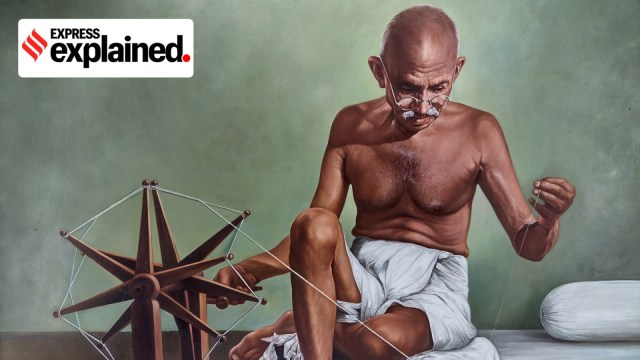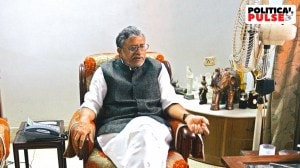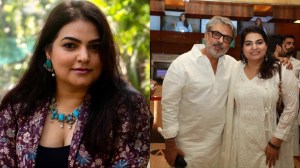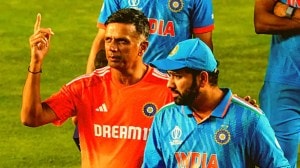- India
- International
This Quote Means: With Ram Temple consecration in Ayodhya, recalling what Gandhi said about Ram Rajya
Gandhi's ideal State, 'Ramrajya', was not associated with a particular religion but was more about moral values – justice, equality and truth, dispensed even to the most marginalised.
 Writing in Hind Swaraj in 1929, Gandhi said, "By Ramarajya, I do not mean Hindu Raj. I mean by Ramarajya Divine Raj, the Kingdom of God..." (Photo via Pixabay)
Writing in Hind Swaraj in 1929, Gandhi said, "By Ramarajya, I do not mean Hindu Raj. I mean by Ramarajya Divine Raj, the Kingdom of God..." (Photo via Pixabay)In the lead-up to the consecration of the Ram Temple in Ayodhya, with Prime Minister Narendra Modi set to take part in the Pran Prathishtha ceremony on Monday (January 22), the words ‘Ram Rajya’ have been evoked in political discussions. The term refers to an ideal State, which is believed to have existed after Ram returned to his kingdom of Ayodhya and established his rule.
Vice President Jagdeep Dhankhar said earlier this month that the spirit of “Ram Rajya” is enshrined in the Constitution and its makers had thoughtfully placed the picture of Lord Ram, Lakshman and Goddess Sita on the top of the chapter related to the Fundamental Rights.
Uttar Pradesh Chief Minister Yogi Adityanath said last year, “UP is the land of Ram Rajya and is moving ahead with this spirit. Only economic prosperity, a development-oriented society and the creation of political integrity can bring happiness in the life of every citizen.”
What did Gandhi say about Ram Rajya?
In the past, PM Modi has also spoken about the concept in relation to how MK Gandhi interpreted it. In a political rally in Ayodhya in 2014, Modi had said in a speech, “Jab log Mahatma Gandhi ko poochha karte the ki raj kaisa hona chahiye… to Mahatma Gandhi ek shabd me samjha dete the ki agar kalyankari rajya ki kalpana karni hai to Ram Rajya hona chahiye. (When people used to ask Mahatma Gandhi about what kind of rule should be, Mahatma Gandhi would explain it in only one phrase that if we think about Welfare State then it should be Ram Rajya).” “Where all are happy and no one is sad,” he added.
In various writings, Gandhi described his idea of a perfect State. Writing in Hind Swaraj in 1929, he said, “By Ramarajya, I do not mean Hindu Raj. I mean by Ramarajya Divine Raj, the Kingdom of God. For me, Rama and Rahim are one and the same deity. I acknowledge no other God but the one God of truth and righteousness.”

He wrote in the magazine Young India in the same year, “Whether Rama of my imagination ever lived or not on this earth, the ancient ideal of Ramarajya is undoubtedly one of true democracy in which the meanest citizen could be sure of swift justice without an elaborate and costly procedure. Even the dog is described by the poet to have received justice under Ramarajya.”
The last line refers to an incident in poet Valmiki’s Ramayana, which speaks about a dog going to the Ayodhya court to complain about a wound inflicted on him by a Brahmin beggar. One version of the story says that both the man and the dog were fighting over food, and the beggar hit him as a result. Ram listens to his story and gives the man a punishment as decided by the dog, who decides the man should be given a position and resources to do good deeds and make a better life for himself.
Religion, politics and Gandhi
Therefore, Ram Rajya for Gandhi was not for the benefit of only one group or specific to a particular religion. “My Hinduism teaches me to respect all religions. In this lies the secret of Ramarajya,” he wrote in 1947.
This was also during a period when the country, around the time of Independence from colonial rule, was witnessing communal riots and violence. Perhaps Gandhi also sought to spread the message of religious harmony, while evoking an idea associated with religion, to showcase that it was possible to practise one’s beliefs and still co-exist with others.
Respecting faiths would also be enshrined in the Constitution, such as through Article 14. It is a fundamental right that guarantees equality under law, irrespective of one’s caste, race, religion, place of birth or sex. Article 15 also says, “The State shall not discriminate against any citizen on grounds only of religion, race, caste, sex, place of birth or any of them.”
It also spoke of Gandhi’s style of politics, where he did not separate religion and politics but used it to garner allies and forge unity. The 1919 pan-Islamic Khilafat movement was launched to prevent the dissolution of the Ottoman Empire after its defeat in World War 1 (1914-1918), at the hands of Allied powers (including Britain). Gandhi lent his support to it and projected it as an anti-Britain movement in India under which Hindus and Muslims would unite.
Ram Rajya as equality and non-violence
In 1934, Gandhi wrote, “Ramarajya of my dream ensures equal rights alike of prince and pauper.” He also described it as “sovereignty of the people based on pure moral authority”, meaning it would be democratic.
In another essay, he spoke of a more spiritual aspect of establishing a just State. “If you want to see God in the form of Ramarajya, the first requisite is self-introspection. You have to magnify your own faults a thousand fold and shut your eyes to the faults of your neighbours. That is the only way to real progress,” he wrote.
He also associated the concept with his own idea of ahimsa or non-violence. Gandhi said, “There can be no Ramarajya in the present state of iniquitous inequalities in which a few roll in riches and the masses do not get even enough to eat … my opposition to the Socialists and other consists in attacking violence as a means of effecting any lasting reform.” Thus, he argued that Ram Rajya was a powerful moral force that would not be achieved through revolutionary means but through internal transformations.
More Explained
EXPRESS OPINION
May 14: Latest News
- 01
- 02
- 03
- 04
- 05































